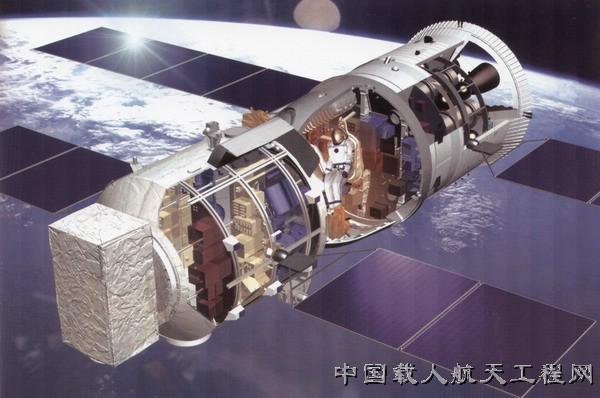


During October 15-16, 2003, the first manned space flight task under China Manned Space Program was implemented, which successfully sent the Chinese astronaut Yang Liwei into the space, realized the Chinese people's thousand-year dream of flight in space, and is a new milestone of the development of China's space program in the new century. The purpose of this task is to fully examine the manned environment, obtain the data relating to the living environment and safety of astronauts, and fully examine the operating performance, reliability and safety of each system as well as the coordination among various systems.
The Shenzhou V manned spaceship is China's first manned spaceship developed on the basis of unmanned spaceship, and has the ability to carry out automatic return under emergency, the manually-controlled return, the return in the second or third day. An astronaut will ride the spaceship, and he can, in accordance with the preset procedure and the commands from the ground, manually re-send the important commands for release of spaceship and unfolding of solar cell array.
China's first manned space flight test was implemented on October 15, 2003. Sixteen hours before the launching, the first astronaut Yang Liwei was selected from the 3-member first astronaut team, and about 2 hours 45 minutes before the launching, the astronaut entered into the spaceship. A 9:00 a.m. on October 15, the Shenzhou V manned spaceship was launched by the LongMarch 2F carrier rocket from Jiuquan Launch Center. At 120 seconds after taking-off the escape tower separated; at 137 seconds the boosters separated; at 159 seconds the first stage separated and the second stage ignited; at 200 seconds fairing separated; at 460 seconds the second stage main engine powered off; at 587 seconds spaceship separated from the rocket and entered an elliptical orbit with inclination of 42.4o, the perigee height of 199.14 km and the apogee height of 347.8 km. In the orbit, the spaceship set up an in-orbit operating mode and unfolded the solar cell arrays on the propulsion module to point the sun. When the flight began with the fifth circle, the spaceship implemented orbital transfer to the 343km circular orbit.
During the flight, the ground kept close touch with astronaut Yang Liwei to keep abreast of his physical condition through the physiological telemetry parameters. At the same time Yang Liwei monitored the execution of important commands and the operation of the spaceship during the flight.
During the space flight, the astronaut Yang Liwei completed the relevant operations in accordance with the preset procedures. When the flight began with the seventh circle, Yang Liwei showed the national flag of China and the flag of the United Nations in the space. In the space about 343km away from the Earth, he said hello to the people all over the world, said hello to all comrades engaged in manned space program, and extended his gratitude to the people all over the country for their care and support. When the flight began with the eighth circle, Yang Liwei also talked with his family members. He wrote down in his workbook that: For the peace and advancement of the human beings, the Chinese people come to the space!.
The Shenzhou V manned spaceship autonomously orbited the earth for 14 times and was ready to return to the earth. At the last circle, the ship received accurate return data from the ground and started to run the return program. The first move was to turn 90o in yaw to separate the orbit module. The second was to turn another 90o in yaw and activate the retro-motor. At last the propulsion module was separated from the re-entry module at the altitude of 145 km. The re-entry module re-entered the atmosphere and passed through “black out area”, and then descended towards the main landing site. A parachute was opened according to the program in order to slow down. When decreasing to about one meter above the ground, four landing buffer engines were activated.At 6:23 am on October 16th, 2003 (Beijing Time), the re-entry module landed safely on the grassland of central Inner Mongolia. After 21 hours and 23 minutes’ flight, Yang Liwei got out of the re-entry module by himself and was in good condition. The orbital module remained in the orbit for 707 days, carrying out a lot of scientific experiments and accumulating experience for the development and manufacturing of long-life spacecraft.